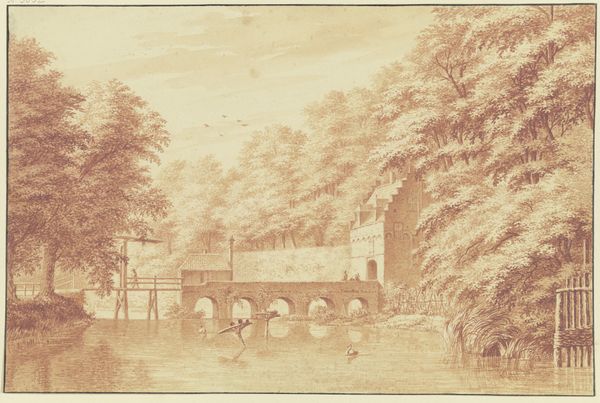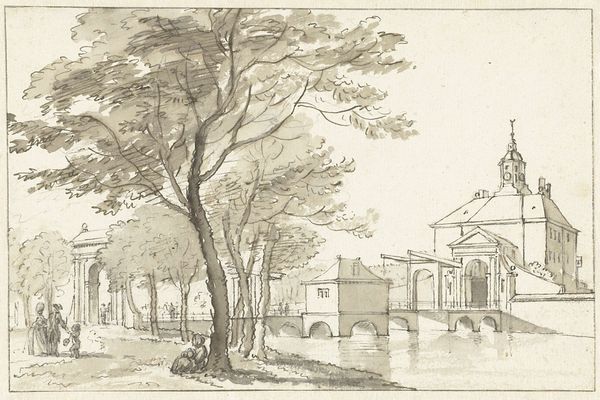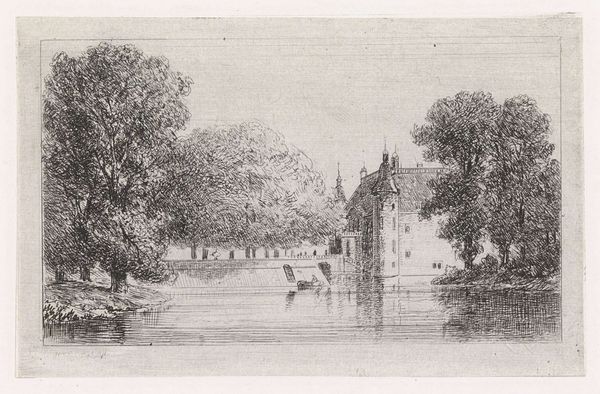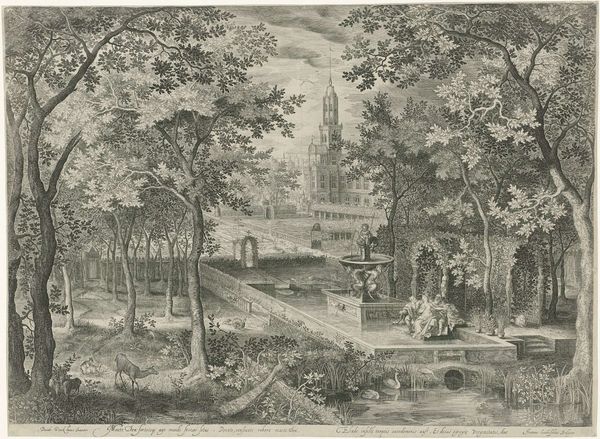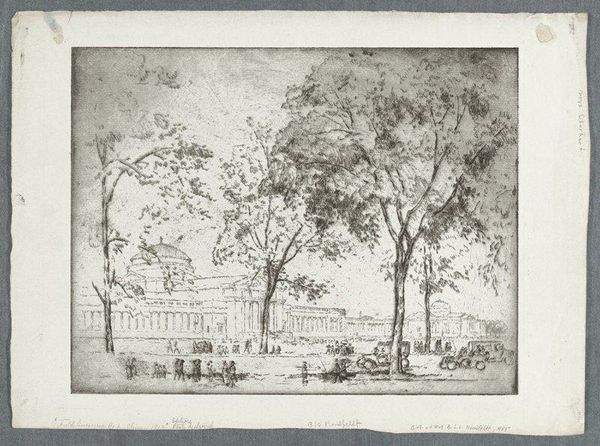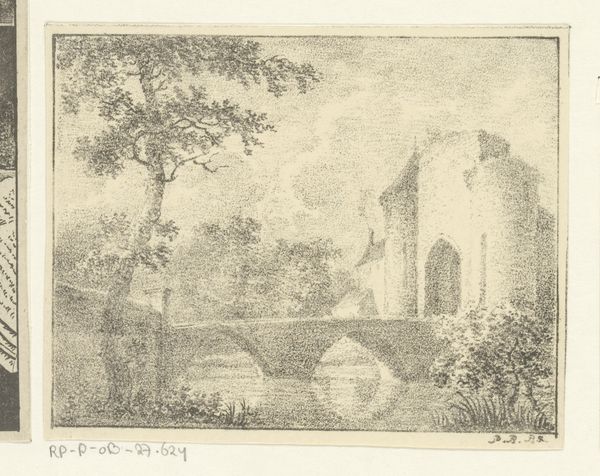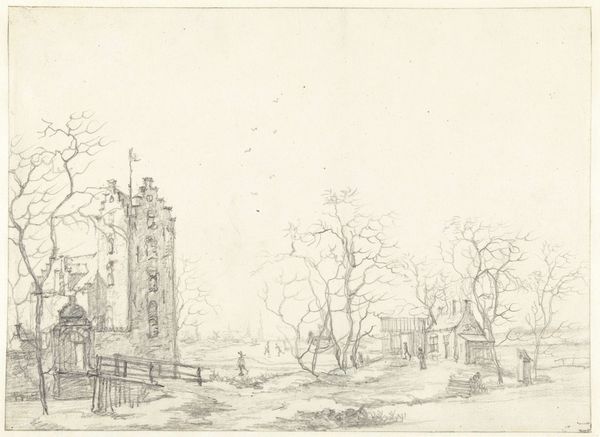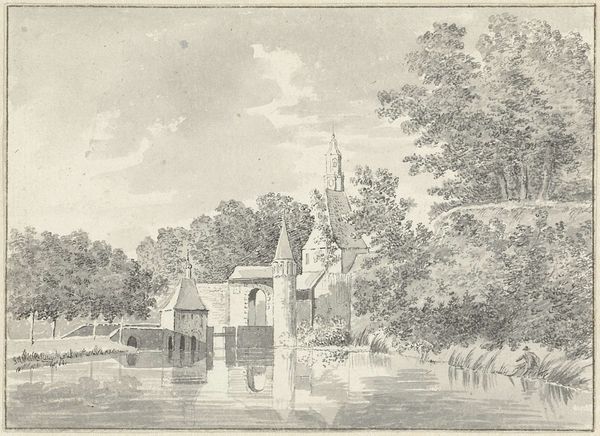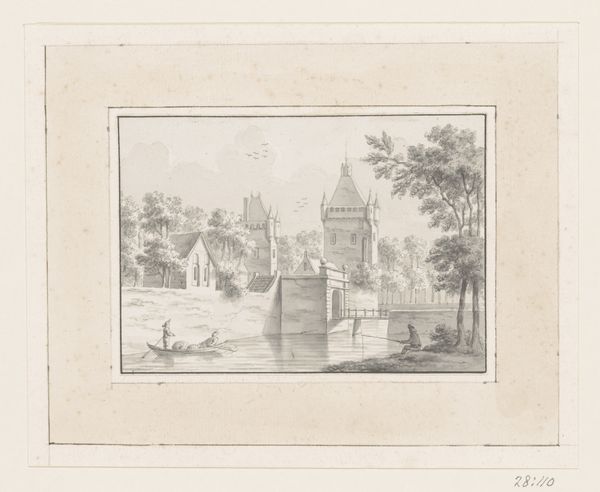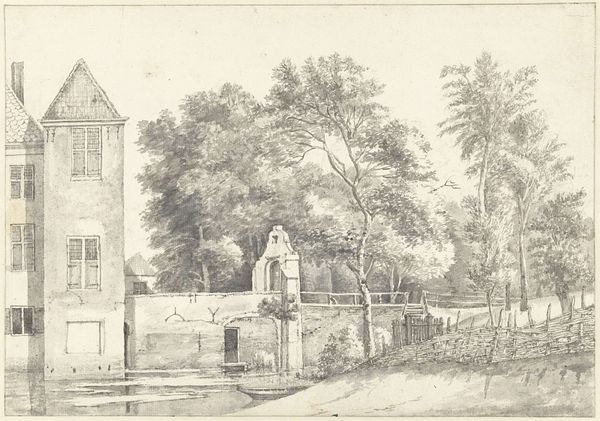
drawing, pencil
#
drawing
#
baroque
#
dutch-golden-age
#
pencil sketch
#
landscape
#
pencil
#
cityscape
Dimensions: height 200 mm, width 465 mm
Copyright: Rijks Museum: Open Domain
Cornelis Pronk made this drawing of the gate of Buren Castle with pen in the 18th century. The most striking feature is the gate itself, a symbol of transition and passage, standing between the known and the unknown, the safe and the potentially dangerous. Consider the recurring motif of the gateway throughout history. From the Ishtar Gate of ancient Babylon to the triumphal arches of Rome, the gate signifies power, control, and the demarcation of space. Yet, its arch also suggests openness, an invitation. Here, the castle gate is reflected in the water, a mirror image that doubles the motif, hinting at hidden depths and subconscious connections. The mirroring of the gate serves as a visual metaphor for the way our minds process memory, reflecting and reinterpreting the past in an unending cycle. The image engages viewers on a deep level by evoking feelings of longing, nostalgia, and the desire to explore. The gate invites us to reflect on our own passages and transformations. Its cyclical progression takes on new meanings depending on the viewer.
Comments
No comments
Be the first to comment and join the conversation on the ultimate creative platform.
